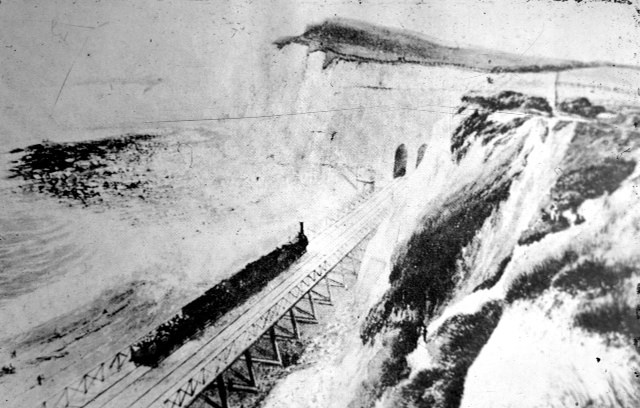Wednesday 3 Feb 2016
Railway detectives piece together history of Dover sea wall
- Region & Route:
- | Southern
Engineers from Network Rail and its contractors Costain have turned detective to tackle the challenge of fixing the damaged sea wall at Dover.
Investigations into the wall and the structure supporting the railway have ranged from hi-tech – including laser surveys from an unmanned aerial vehicle – to low tech.
While Network Rail has excellent records of many of its Victorian structures, the Southern Railway – which existed from 1923 to 1947 - did not keep many documents on the work it undertook at the site on Shakespeare Beach in 1927. So engineers have been not only investigating the structure itself, with bore holes and trenches, but engineers have also been combing local newspaper archives and even online videos for information.
Steve Kilby, senior programme manager for Network Rail, said: “We are the sixth company to own this stretch of railway since it was built in the 1840s, and the record-keeping of some of our predecessors means we are still finding out how this stretch of railway was built.
“So along with traditional engineering, one of the first things we did with this project was to research the history of the site to build up a picture of what happened here.
“What is rapidly emerging is that, while the original viaduct was well built, the work that was done in the 1920s was not what we would have hoped.”
The railway on Shakespeare Beach was originally raised on wooden trestles, with the waves breaking on the beach below. In 1927, the Southern Railway constructed the sea wall alongside it, leaving room for a new set of tracks. They then dumped many thousands of tonnes of chalk around the viaduct, encasing it and building the railway on top.
This was how it stayed until Christmas Eve 2015. Since that day, trains have been unable to run between Dover and Folkestone.
The tracks have since been dug up, to allow engineers to examine the nature of the soil under the railway.
Mr Kilby added: “We are working on designs all the time and the investigations we are undertaking will help us make the right decision for Dover. We need to be absolutely sure we have the right solution and a timescale we are confident in.”
Contact information
Passengers / community members
Network Rail national helpline
03457 11 41 41
Latest travel advice
Please visit National Rail Enquiries
Journalists
Network Rail press office - Chris Denham
Operational Communications Manager
020 3357 7969
07515 626530
chris.denham@networkrail.co.uk
About Network Rail
We own, operate and develop Britain's railway infrastructure; that's 20,000 miles of track, 30,000 bridges, tunnels and viaducts and the thousands of signals, level crossings and stations. We run 20 of the UK's largest stations while all the others, over 2,500, are run by the country's train operating companies.
Usually, there are almost five million journeys made in the UK and over 600 freight trains run on the network. People depend on Britain's railway for their daily commute, to visit friends and loved ones and to get them home safe every day. Our role is to deliver a safe and reliable railway, so we carefully manage and deliver thousands of projects every year that form part of the multi-billion pound Railway Upgrade Plan, to grow and expand the nation's railway network to respond to the tremendous growth and demand the railway has experienced - a doubling of passenger journeys over the past 20 years.
Follow us on Twitter: @networkrail
Visit our online newsroom: www.networkrailmediacentre.co.uk

